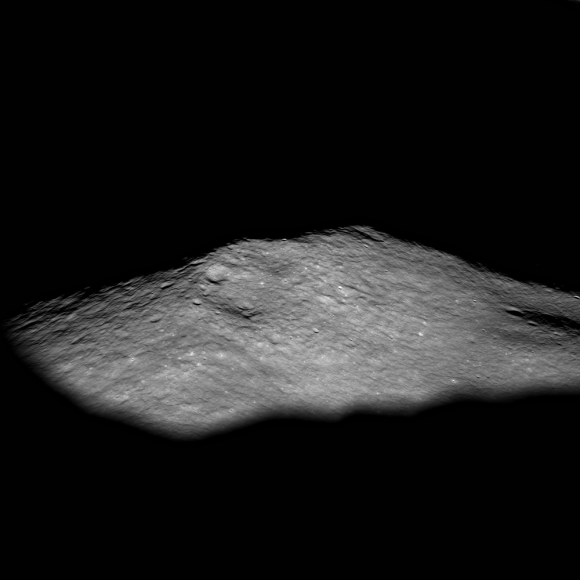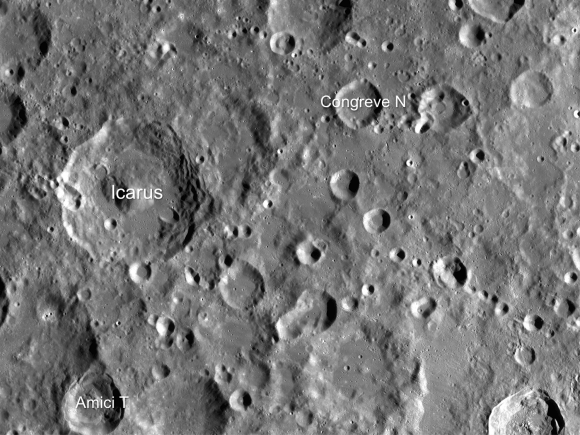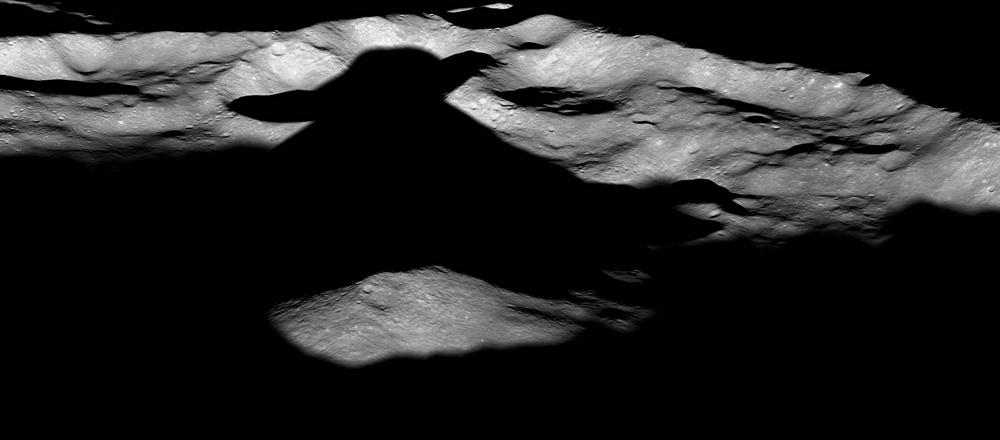Scientists from the Lunar Reconnaissance Orbiter say that Icarus Crater is one of a kind on the Moon because its central peak rises higher than about half its rim. Most central peaks rise only about halfway to the crater rim. But at just the ring angle and lighting conditions, the shadow this central peak creates on the rolling and jagged crater rim looks like the Star Wars Character Yoda. Interestingly, this crater is located on what some people erroneously call the “Dark Side” of the Moon – what is actually the lunar farside.

Below you can see a closeup of the central peak of Icarus crater rising out of the shadows to greet a new lunar day.

Icarus is located just west of Korolev crater on the lunar farside. The light-colored plains surrounding the craters were deposited during the formation of the Orientale basin, which is located over 1500 km away.

Find out more about these images from LRO and see larger versions at the LROC website.

